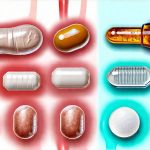Many people experience frustrating bladder issues – urgency, frequency, leakage, discomfort – that seem to come from nowhere. Often, these aren’t caused by a specific disease but are triggered by everyday habits and substances we consume without realizing their impact. We tend to focus on obvious irritants like caffeine or alcohol, but the connection between diet and bladder health is far more nuanced and personal. Identifying your unique triggers requires careful observation and a methodical approach, something that can feel overwhelming without guidance.
The good news is you can take control of your bladder health by becoming a dietary detective. This process doesn’t necessitate drastic changes or restrictive diets. Instead, it involves mindful tracking and analysis to pinpoint specific foods and drinks that might be contributing to your symptoms. A diet log isn’t about deprivation; it’s about empowerment – understanding how your body responds to what you eat so you can make informed choices that support a comfortable and confident life. It’s a surprisingly effective way to discover hidden patterns and reclaim control over a frustrating health concern, often leading to significant improvements without needing extensive medical intervention.
The Power of Detailed Diet Logs
A simple food diary isn’t enough for identifying bladder triggers. We need a diet log that goes beyond just listing what you ate. It must include specifics about when you consumed it, how much, and – crucially – any associated symptoms or changes in your bladder behavior. This detailed record allows us to correlate dietary intake with urinary patterns and pinpoint potential culprits. Think of it as collecting data points for a personal health investigation.
The key is consistency and honesty. Log everything, even seemingly insignificant snacks or sips of water. Don’t edit out those extra cookies or that second cup of coffee – accurate information is vital for drawing meaningful conclusions. Be specific about preparation methods too; a homemade tomato sauce may affect you differently than store-bought. Finally, record not just the food itself but also any additives or ingredients that might be relevant. For example, logging “salad with balsamic vinaigrette” is less helpful than “salad with 2 tbsp balsamic vinaigrette (contains vinegar).”
To maximize effectiveness, pair your diet log with a voiding diary. This records when you urinate, the amount of urine produced (estimated if necessary), and any associated sensations like urgency or discomfort. By comparing these two logs, you can begin to see how specific foods impact your urinary frequency, volume, and overall bladder health. Several apps are available to help with both diet and voiding diaries, streamlining the process and making it easier to track over time. You might also find daily logs helpful in this process.
Decoding Your Log: Identifying Potential Triggers
Once you’ve diligently kept a diet log for at least a week (preferably two or three), it’s time to analyze the data. Look for patterns and correlations between what you ate and your bladder symptoms. Don’t immediately assume something is a trigger; look for consistent relationships across multiple entries. A single instance of discomfort after drinking coffee doesn’t necessarily mean caffeine is the enemy, but if you consistently experience urgency within an hour of consuming it, that warrants further investigation.
Start by focusing on common bladder irritants like:
– Caffeine (coffee, tea, soda)
– Alcohol (especially beer and wine)
– Citrus fruits and juices
– Spicy foods
– Artificial sweeteners
– Carbonated beverages
However, remember that these are just starting points. Your triggers might be completely different! Some people find tomatoes or chocolate to be problematic, while others have no issues with them. Pay attention to less obvious suspects too – dairy, gluten, processed foods, and even certain vegetables can sometimes contribute to bladder symptoms in sensitive individuals.
When you identify a potential trigger, consider an elimination diet. This involves removing the suspect food from your diet for a period of time (usually 2-4 weeks) and observing whether your symptoms improve. If they do, slowly reintroduce the food in small amounts to see if the symptoms return. This process helps confirm whether the food is truly a trigger and how much you can tolerate. Learning to identify food triggers is a key step towards long-term bladder health management.
Understanding Food Sensitivity vs. Allergy
It’s important to differentiate between food allergies and sensitivities when interpreting your diet log. Food allergies involve an immune system response that can cause severe reactions, including hives, swelling, and difficulty breathing. These are relatively rare and typically require immediate medical attention. Food sensitivities, on the other hand, don’t trigger an immune response but can still cause uncomfortable symptoms like bloating, fatigue, or – in this case – bladder irritation.
These sensitivities often develop gradually and may not be immediately obvious. The difference is crucial because managing a food sensitivity generally involves modifying your diet to minimize exposure, whereas managing a true allergy requires strict avoidance and potentially carrying an epinephrine auto-injector. Your diet log can help you discern which you’re dealing with by noting the timing and severity of symptoms in relation to consumption. A delayed reaction that resolves with dietary change suggests a sensitivity, while a rapid onset of severe symptoms points towards an allergy.
The Role of Acidic Foods & pH Balance
The acidity of foods can significantly impact bladder health for some individuals. While your body naturally regulates pH balance, consistently consuming highly acidic foods may overwhelm this system and irritate the bladder lining. Common acidic offenders include citrus fruits, tomatoes, vinegar-based dressings, and carbonated beverages. However, it’s not just the food itself but also how it interacts with your individual physiology that matters.
Some people find that reducing overall dietary acidity helps alleviate their symptoms. This doesn’t mean eliminating all acidic foods – a balanced diet is still crucial – but rather being mindful of portion sizes and combining them with more alkaline-promoting foods like bananas, melons, and leafy green vegetables. Monitoring how your body responds to different levels of acidity can provide valuable insights into your personal triggers. Remember that the pH scale isn’t linear; even small changes in dietary acidity can have noticeable effects for sensitive individuals.
Beyond Food: Hydration & Timing
Diet isn’t the only factor at play. Hydration is paramount for bladder health, but so is when you drink fluids. Drinking large amounts of fluid right before bedtime can increase nighttime urination and disrupt sleep. Similarly, restricting fluids all day and then rapidly hydrating in the evening can overwhelm your bladder. Aim for consistent hydration throughout the day, spreading your intake evenly.
Timing meals can also affect bladder function. Eating large, heavy meals can put pressure on the bladder, potentially exacerbating symptoms. Smaller, more frequent meals may be easier on your system. Furthermore, certain foods might have a delayed effect, so pay attention to the timing of symptoms relative to when you ate. For example, spicy food consumed at lunchtime might not cause discomfort until several hours later. If you’re experiencing bladder pain, consider how to use heat for relief.





















